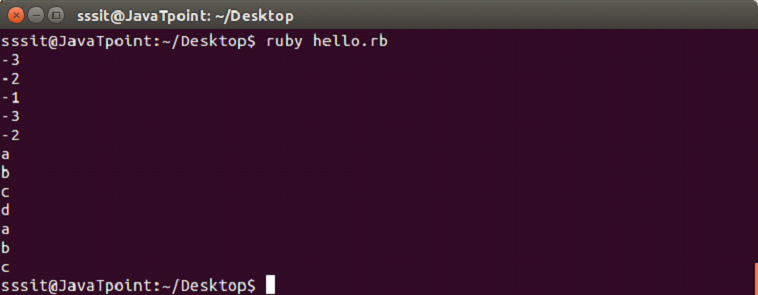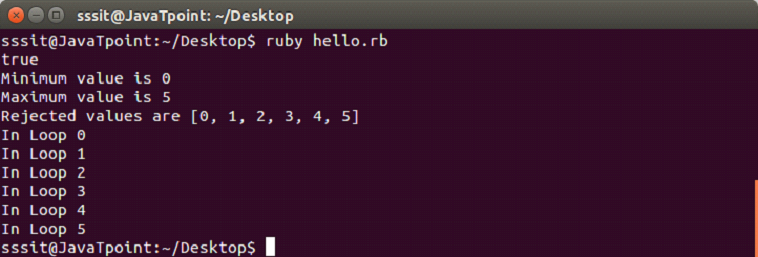Ruby Ranges
Ruby range represents a set of values with a beginning and an end. They can be constructed using s..e and s…e literals or with ::new.
The ranges which has .. in them, run from beginning to end inclusively. The ranges which has … in them, run exclusively the end value.
Output:

Ruby has a variety of ways to define ranges.
- Ranges as sequences
- Ranges as conditions
- Ranges as intervals
Ranges as Sequences
The most natural way to define a range is in sequence. They have a start point and an end point. They are created using either .. or … operators.
We are taking a sample range from 0 to 5. The following operations are performed on this range.
Example:
Output:

Ranges as Conditions
Ranges are also defined as conditional expressions. Different conditions are defined in a set of lines. These conditions are enclosed within start statement and end statement.
Example:
Output:

Ranges as Intervals
Ranges can also be defined in terms of intervals. Intervals are represented by === case equality operator.
Example:
Output:

Ruby Reverse Range
Ruby reverse range operator does not return any value. If left side value is larger than right side value in a range, no vlaue will be returned.
Example:
Nothing will be returned in the output for the above example.
To print a reverse order, you can use reverse method in a normal range as shown below.
Example:
Output:

